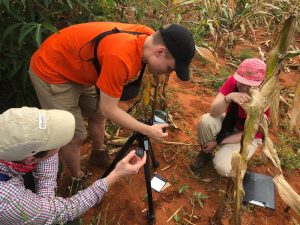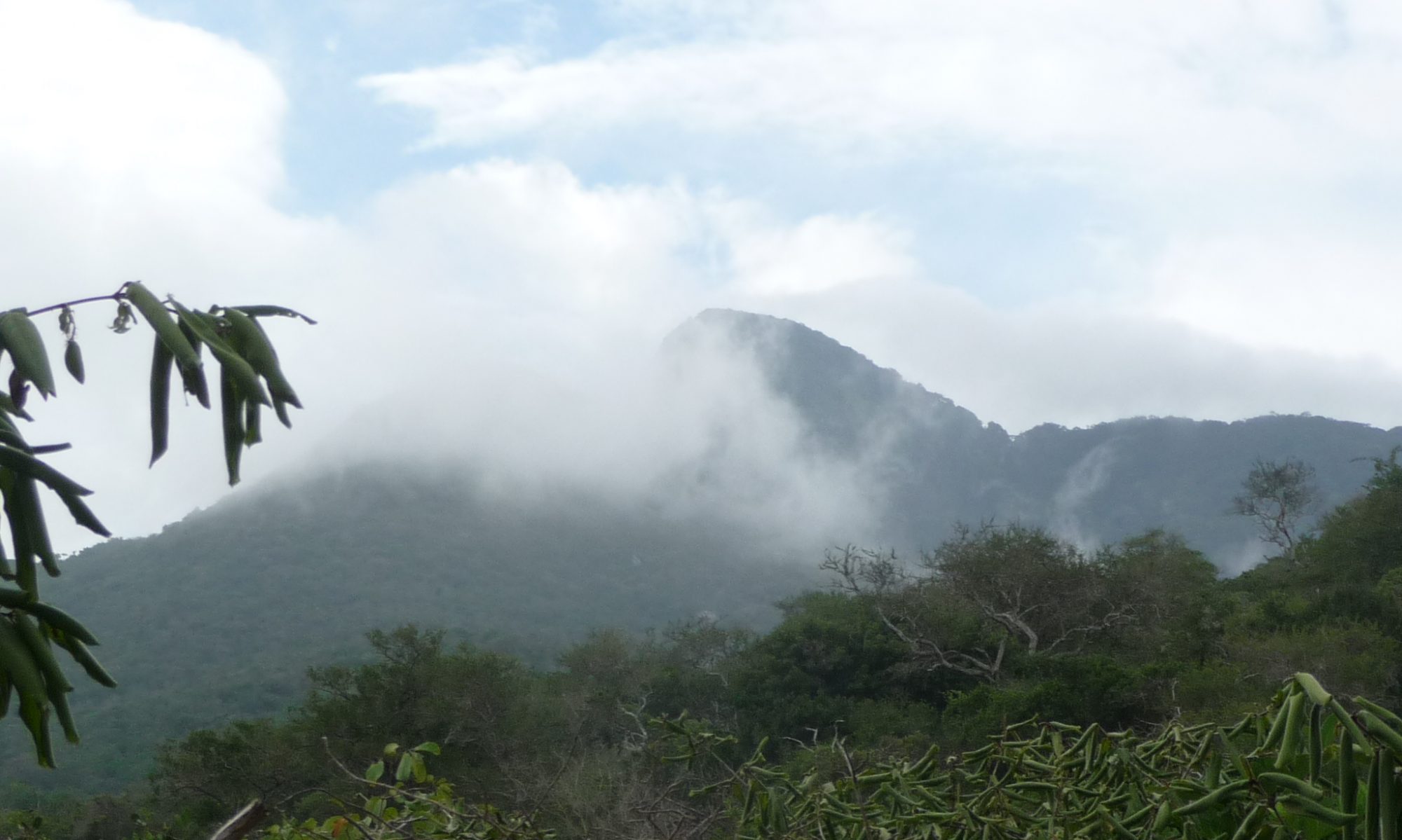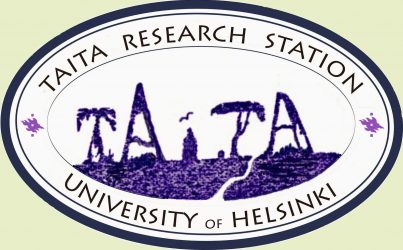After a bit short and not too refreshing night in tents under the starry African sky we woke up before sunrise to be ready for the first measurements on the Maktau fields. In the morning dusk the students manned the three study plots with the FLIR thermal camera and Licor, the leaf area index calculator. With FLIR we pointed on cassava leaves to measure their temperature, and Licor was used to measure how much the leaves prevent the sunshine from prenetrating into the ground level. As the devices were only two and we had three plots, the morning was quite peaceful as there was no hurry with the measurements and we could enjoy the savannah’s bird symphony.
When the groups were done with first set of measurements, it was time to enjoy a delicious breakfast at Mwadime’s house with plenty of cooked eggs, oatmeal and local bakery products. After breakfast we had a small break for taking a nap, watching birds and so on, to be ready for the next set of experiments: chlorophyll and infiltration measurements and taking pictures of leaves with a hyperspectral camera. A more thorough report of the measurement results will be published in the course blog later.

One group practices using the hyperspectral camera.
Between measurement tasks, Mwadime walked with idle groups to tell interesting details about local farming practices, flora and fauna and the Kenyan society. We quickly fixed his fence broken by a hungry elephant rushing through towards his maize fields, and learnt how the farmers can upgrade the soil quality by leaving the after harvest biomass onto the fields instead of burning it.
One of the infiltration measurement plots was at the bottom of a huge, 6 meters deep water pit a local farmer had mostly dug without any machinery in order to collect enough irrigation water for his crops during the rainy seasons. As a reward for being allowed to conduct research on the farm, University of Helsinki has provided a plastic cover for the bottom to prevent water from infiltrating into the soil.

The pit a local farmer had dug to store rainwater for irrigating his crops.
The day on the lowlands was hot despite remarkable cloud cover, especially out on the open fields without any shadows, which is why everyone was happy to leave the farms behind and head back to the cooler mountains and research station. On the way to Taita Hills, we had a brief stop at Mwatate to support local kiosk keeper by emptying his refrigerator of cold soft drinks.

